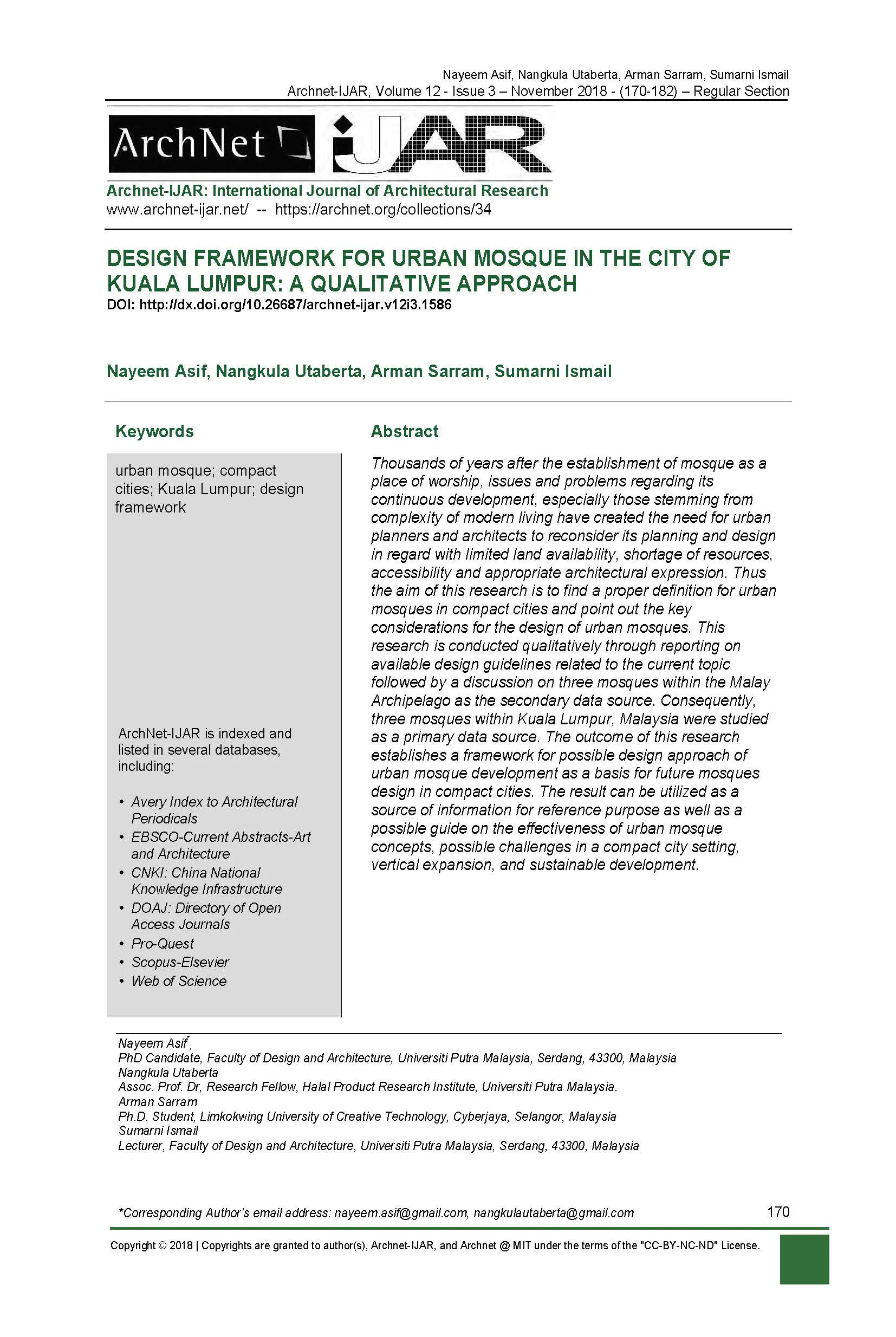
Thousands of years after the establishment of mosque as a place of worship, issues and problems regarding its continuous development, especially those stemming from complexity of modern living have created the need for urban planners and architects to reconsider its planning and design in regard with limited land availability, shortage of resources, accessibility and appropriate architectural expression. Thus the aim of this research is to find a proper definition for urban mosques in compact cities and point out the key considerations for the design of urban mosques. This research is conducted qualitatively through reporting on available design guidelines related to the current topic followed by a discussion on three mosques within the Malay Archipelago as the secondary data source. Consequently, three mosques within Kuala Lumpur, Malaysia were studied as a primary data source. The outcome of this research establishes a framework for possible design approach of urban mosque development as a basis for future mosques design in compact cities. The result can be utilized as a source of information for reference purpose as well as a possible guide on the effectiveness of urban mosque concepts, possible challenges in a compact city setting, vertical expansion, and sustainable development.
I agree to the terms outlined below:
You agree to upload and assign Mosqpedia Database the rights to use the content worldwide and in perpetuity across all current and future media platforms. Mosqpedia Database may edit, copy, adapt and translate your contribution.
The content will be distributed under the Creative Commons Attribution-Deed – Attribution-NonCommercial-NoDerivatives 4.0 International – Creative Commons
All data will be stored in line with data protection regulations.